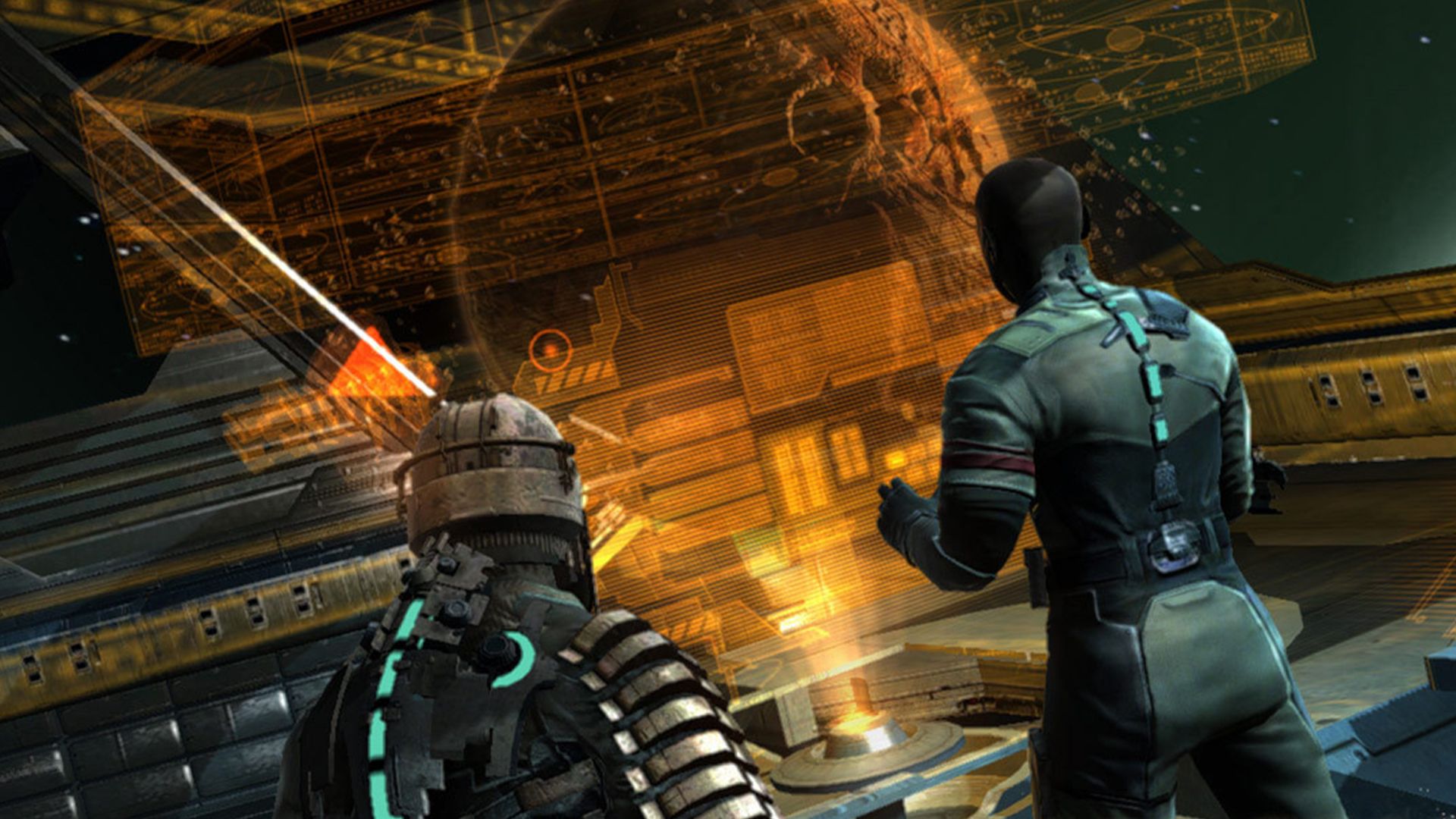In 2008, Dead Space came out of nowhere. At the time, most games—especially ones published by behemoths like EA—would be relentlessly pre-hyped through previews, cover features, and trailers on early video sites like GameTrailers. But Dead Space had next to no fanfare, and I remember the day a preview version was dropped on my desk back when I was a writer for a PlayStation magazine. "What the hell is Dead Space?" But moments after sliding the disc into our debug PS3, I knew this was a game worth paying attention to.
Dead Space launched for the PC, Xbox 360, and PS3 on October 13, tactically deployed in the run-up to Halloween. It was developed by EA Redwood Shores, which would later rename itself Visceral Games. Before it was dissolved and merged into EA Vancouver and EA Montreal in 2017, Visceral made a huge number of games including a wild adaptation of Dante's Inferno, morally dubious Battlefield spin-off Hardline, a couple of games based on The Godafther, and classic Bond shooter Agent Under Fire. It was a busy studio.
But Dead Space, one of the few games the developer made that wasn't based on an existing IP, is the highlight of its 19-year lifespan. It was heavily inspired by Resident Evil 4, which launched three years earlier and raised the bar for action horror games. Creator Glen Schofield, who's now making a spiritual successor called The Callisto Protocol, wanted to create "the most frightening horror game possible", borrowing elements from influential sci-fi horror movies and video games including Alien, The Thing, and System Shock.
After contact is suddenly lost with the USG Ishimura, a colossal 'planet cracker' mining ship, a small rescue crew is sent in to investigate—including protagonist Isaac Clarke, an engineer. The ship has been plunged into darkness and is in a serious state of disrepair. Worse still, the crew have somehow mutated into gruesome monsters with a powerful hunger for human flesh. Like some of the best sci-fi horror stories, it's a simple but evocative premise.
Dead Space is an over-the-shoulder shooter that blends slow, atmospheric horror with frantic, bloody action—and sustains a masterful balance of the two for the entirety of its 11-hour runtime. As Clarke works to restore power to the ship and activate a distress call, he move through different parts of the ship: from engineering through to medical, up to the crew quarters and the bridge. You learn about life aboard the ship before everything went to shit, and uncover clues about a larger mystery that would be expanded upon in the sequels.
The creatures infesting the Ishimura, called necromorphs, are straight out of the Stan Winston school of monster design—particularly his work with John Carpenter on The Thing. These grotesque reanimated corpses are flailing, screeching, shapeless things: like a heap of severed limbs squished horribly together. They're incredibly resilient, but can be permanently killed by severing their limbs with Isaac's arsenal of heavy duty industrial tools, which forms the basis of the game's combat. As that famous bloody graffiti says: CUT OFF THEIR LIMBS!
The plasma cutter is one of the most satisfying weapons in video game history, letting you precisely slice chunks off enemies, leaving a trail of twitching arm-and-leg-things in your wake. Being rushed by hordes of necromorphs in dark, claustrophobic corridors partially illuminated by flickering lights, and having to carefully line up a shot to take off their head or legs, is wonderfully nerve-racking. A dramatic Shining-inspired score only adds to the tension. It's not a scary game, but it is scarily good at keeping your heart rate constantly high.
It's the Ishimura itself that most sticks in my mind. This labyrinth of oppressive metal corridors still looks fantastic 13 years later. The Alien-inspired industrial aesthetic is incredibly well done, with atmospheric lighting, malfunctioning holographic screens, and gaping holes in the hull sucking the gravity from some areas. It's the kind of grounded, lo-fi science fiction that really works in horror, giving you a sense that there's no shiny, advanced piece of tech that's going to save you—just some old maintenance equipment.
Similar to BioShock's Rapture, there's a constant feeling that the Ishimura was once a place teeming with life—which makes the fact it's so eerie and silent when you arrive even more unsettling. Dead Space always knows when to slow down, hold back, and let you just soak in the atmosphere. There are lots of small stories to discover about normal people's lives on the ship, which humanises the crew and adds an extra layer of uneasy horror to having to slice their heads off with your plasma cutter. These things were people once.
Dead Space is still worth playing today. The PC version is the best way to experience it in 2021, although the port is notoriously shoddy and needs some tweaking to get running smoothly. Or you could always wait for the upcoming remake, which is being developed by Jade Raymond's Motive Studios. This will apparently retain the story and structure of the original, but with updated visuals taking advantage of modern graphics technology. I'm very eager to return to the Ishimura—I just hope this remake respects the distinctive feel of the original.



